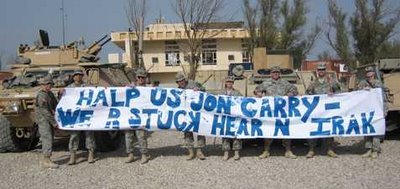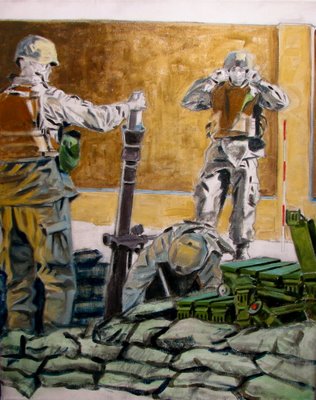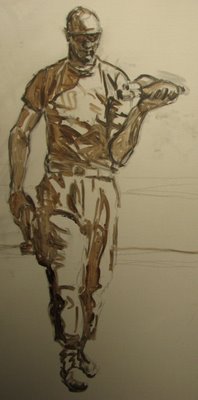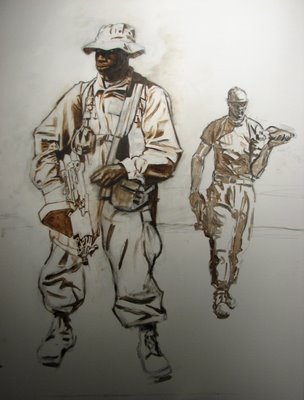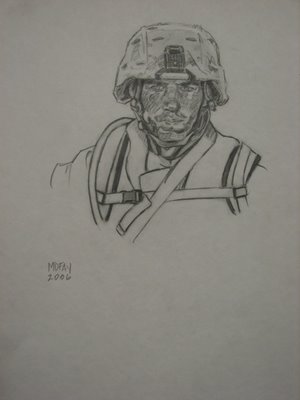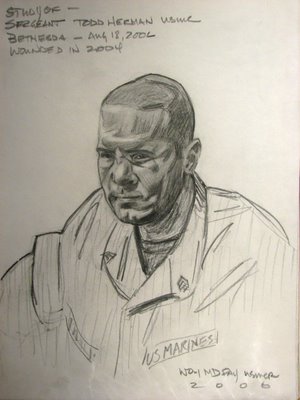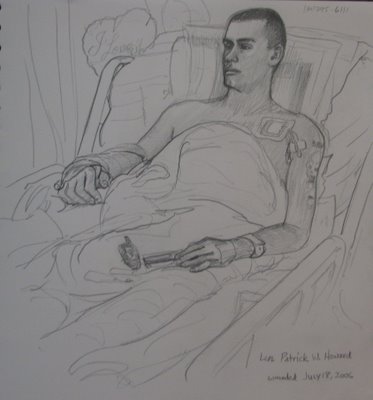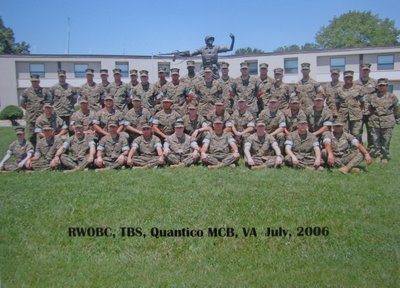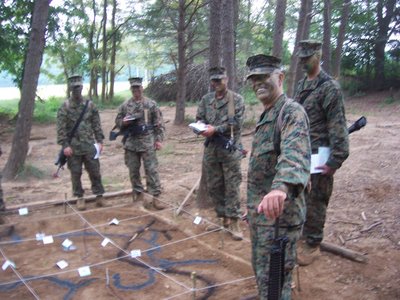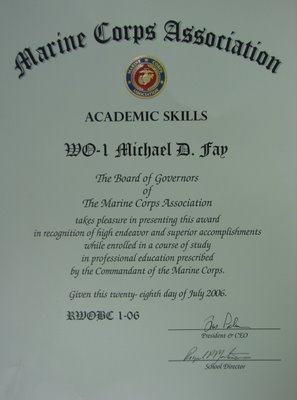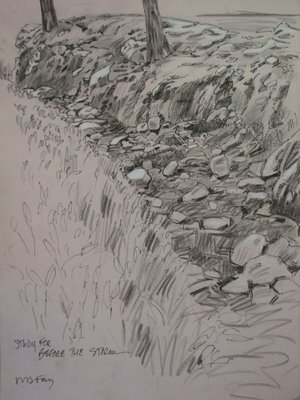Five years ago, in my long lost civilian life, I was working for a
historic architecture restoration company. September 11, 2001 found me high up on scaffolding sanding and prepping the exterior dentil molding of a Tidewater Virginian Episcopal colonial church called
Hungars Parish. We'd been on the jobsite since sunup. It was a beautiful September morning, the sky cloudless and blue from horizon to horizon and the air delicately fragrant with the harvests of corn, wheat and soybean occuring in adjacent fields. A local farmer pulled his old dusty and dented Ford F150 into the oak shaded grass parking lot surrounding the church around 0930 and shouted up to us in his
long o'd Tidewater accent, "yoou bouys better get doown here and listen to the radioo". We did. Planes had crashed into the World Trade Center in New York City and into the Pentagon. In that moment I knew that it was Al Qaeda. In that moment I knew as a Marine Reservist my life had been changed forever. In that moment I knew we as a nation were at War. 2,996 fellow Americans, almost all innocent civilians, had been murdered by a terrorist movement which is a pox upon the face and the soul of the world and civilization, Islamofacsism.
Today, five years into World War Three, there are those of us who remember that 9/11 was a highly planned deliberate act of war and not some ill-concieved criminal anomaly. We've acted accordingly and have taken the fight to the terrorists in Afghanistan, and more importantly, against Terrorism itself by toppling Saddam Hussein (once the planet's #1 state sponsor and utilizer of Terrorism....he was the WMD!) and initiating the difficult, but necessary process of introducing democracy into the heart of the Middle-East.
Today, five years into World War Three, 2,662 American GIs have died in Operation Iraqi Freedom and 329 in Operation Enduring Freedom. Our American homeland has not been attacked again and numerous attempts to do so have been thwarted. The Taliban of Afghanistan and the Baathists of Iraq have both been defeated and two new fledgling democracies are emerging slowly but surely on the world political scene. We are pressing forward both militarily and in the realm of political ideas.
Today, five years into World War Three, there are those who are in denial. There are American politicians and citizens who believe the answer to confronting Islamofascism is to cut and run militarily and ideologically from the battlefield, to remove essential arrows from our quiver needed in hunting down and nipping terrorist plots in the bud and to generally ring ones hands in the face of our enemy's bellicosity, ingenuity and resolve. Yet somehow they want us to believe they would be fighting this conflict smarter and stronger.....perhaps with as much zeal as they've fought NSA wiretapping, money transfer tracking and ABC's
Path to 9/11.
Today, five years into World War Three and one year into this blog, I, and hopefuly you, know what my beliefs are. I've been there and done that. Perhaps the current administration has made mistakes and miscalculations...so what? That's the nature of war and the messy unfolding of history. No one's digging up the bones of FDR because Pearl Harbor was bombed, Corregidor and Wake Island fell, German and Japanese civilians were immolated by the hundreds of thousands in fire bombings, or because thousands of US citizens of Japanese decent were relocated to internment camps. As they probably would have told naysayers, heeldraggers and second-guessers back then,
"it's war stupid".Today, five years into World War Three, the enemy believes they are winning. What do you believe? The answer to this question has more power than any other force on the planet.
As for me.....to the 2,996 innocents who perished at the hands of evil on September 11, 2001 and to my brothers and sisters-in-arms who have willingly given and will continue to give their last full measure in this noble and just cause, I say we will not forget, we will not become faint of heart, we will continue nametaking and heartbreaking in celebration of your lives, and in unrelenting defense of our way of life. To those, due to political expediency, plain studpidity, deliberate ignorance, or any combination thereof, who are in denial, we will continue to press forward despite you. To you, whom I refer to time and again as
moonbats, you the highly placed and educated elites mired in delusional conspiracy theories, spineless idealism, misdirected hate and anti-Bush blame-America angst...you who are the greatest economic and educational beneficiaries of 4,000 years of Western Civilization's advances and institutions, yet who have become apologists, aiders and abetters to the very people who will at the end of the day hack your heads off without blinking an eye....upon you the cumulative efforts of Civilization, upon you every dime spent by your parents on your care, comfort and education, upon you the risks taken by your immigrant ancestors to make it to our shores have been a complete and utter waste of their courage, thoughts, hopes and calories.......to you and not the enemy I extend my most heartfelt disdain and disgust. You are parasites. History will speak of you in the same breath as the Copperheads, Vichy French, and Neville Chamberlain.
To my fellow Americans....celebrate and sleep well....you are safe
on my watch tonight (please go watch and listen to this wonderful music video by Marine Major Mike Corrado). God Bless America. Semper Fi.
Postscript: I just had to go over to Daily Kos and see how moonbat central is taking note of 9/11. Unfortunatley I didn't wrap my head with a sufficient amount of duck tape....so be forewarned, lest your head explodes too.
 Recon Hill by Charles Grow This is pen and ink work at its very best.
Recon Hill by Charles Grow This is pen and ink work at its very best. Emergency Medical Center by Peter Michael Gish Colonel Gish's watercolors are as good as anything Sargent ever did.
Emergency Medical Center by Peter Michael Gish Colonel Gish's watercolors are as good as anything Sargent ever did. Mockup for Leatherneck magazine Halloween issue during WWII by Tom Lovell
Mockup for Leatherneck magazine Halloween issue during WWII by Tom Lovell Corporal Duff Chapman by John McDermott That young/old look etched on the face of a Marine on Okinawa
Corporal Duff Chapman by John McDermott That young/old look etched on the face of a Marine on Okinawa "Country Slim" Guillory by Ben Long
"Country Slim" Guillory by Ben Long Captain James K. Hall by Henry Casselli Drawn from life after an intense night of combat in Vietnam
Captain James K. Hall by Henry Casselli Drawn from life after an intense night of combat in Vietnam



